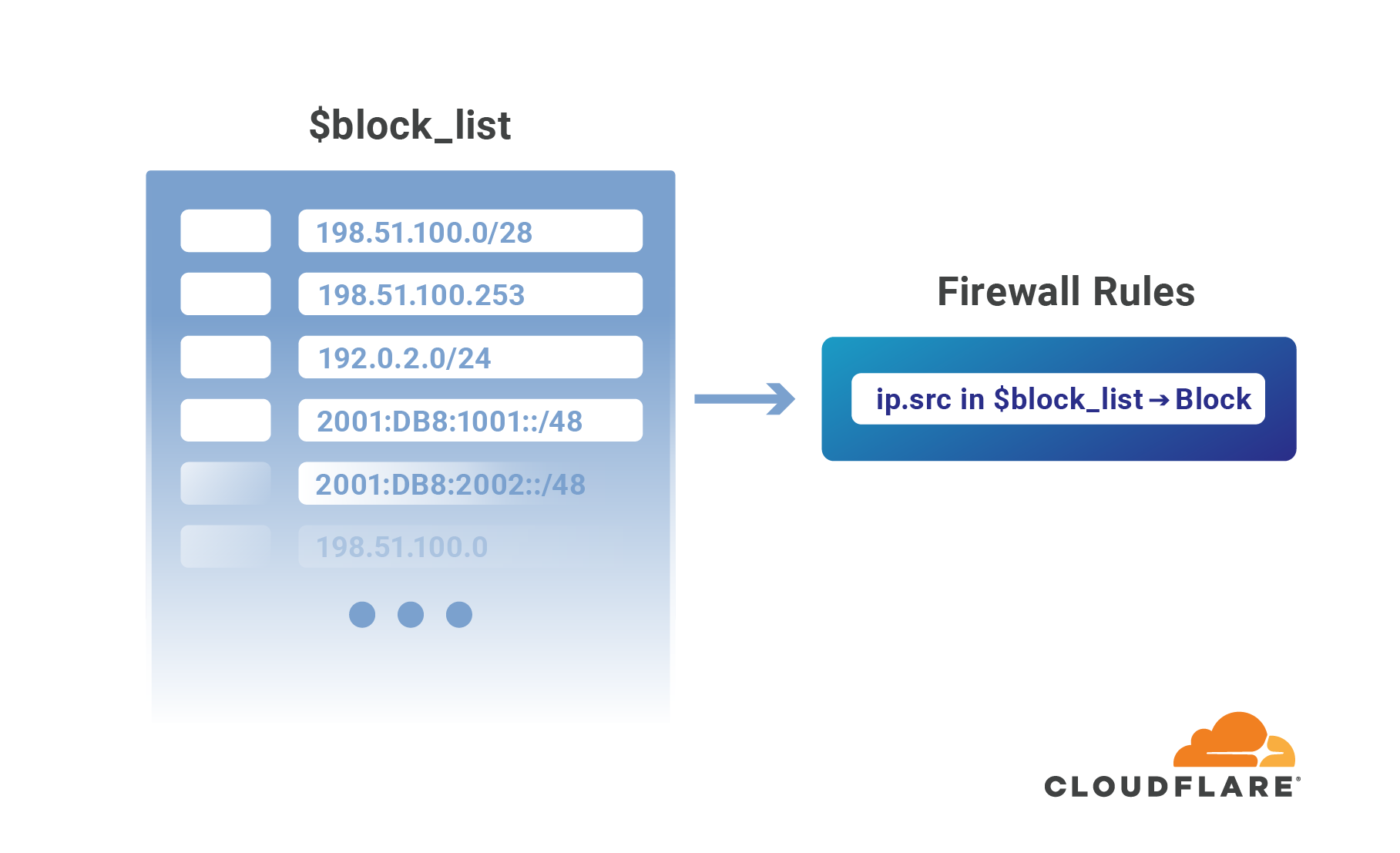Authentication on the web has been steadily moving to the application layer using services such as Cloudflare Access to establish and enforce software-controlled, zero trust perimeters. However, there are still several important use cases for restricting access at the network-level by source IP address, autonomous system number (ASN), or country. For example, some businesses are prohibited from doing business with customers in certain countries, while others maintain a blocklist of problematic IPs that have previously attacked them.
Enforcing these network restrictions at centralized chokepoints using appliances—hardware or virtualized—adds unacceptable latency and complexity, but doing so performantly for individual IPs at the Cloudflare edge is easy. Today we’re making it just as easy to manage tens of thousands of IPs across all of your zones by grouping them in data structures known as IP Lists. Lists can be stored with metadata at the Cloudflare edge, replicated within seconds to our data centers in 200+ cities, and used as part of our powerful, expressive Firewall Rules engine to take action on incoming requests.
Previously, these sort of network-based security controls have been configured using IP Access or Zone Lockdown rules. Both tools have a number of shortcomings that we’ve eliminated with the introduction of IP Lists, including:
IP prefix boundaries
Our legacy IP Access rules allow the use of a limited number of IP prefix lengths: /16 and /24 for IPv4; and /32, /48, and /64 for IPv6. These restrictions typically result in users creating far more rules than needed, e.g., if you want to block a /20 IPv4 network you must create 16 separate /24 entries.
#cloudflare access #cloudflare network #product news #neural networks
